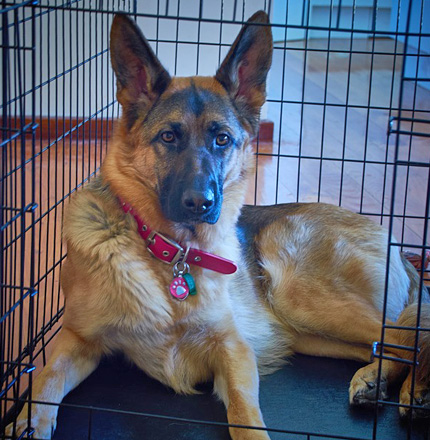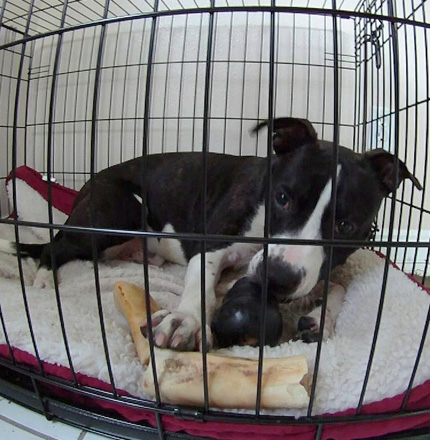Crate Training Your Pet

Why Crate Train Your Dog?
- They learn it is their ‘Room’- even with the door open
- Provide a safe, cozy place that she can call her own and sleep in at night.
- Gives you a safe way to transport your dog and travel with her to hotels, to friends’ homes, when on vacation, etc.
- Helpful when introducing a new dog into your household.
- Used to efficiently house train your dog and prevent her from being destructive.
How does Using a Crate to Prevent Destructive Behavior?
Dogs and puppies urge to rip up the toilet paper and run down the hall, chewing up cushions, stealing garbage may be too strong when left unattended, so the crate lets you know they are safe. When you are able to train them in an hour again, this helps them stay out of trouble.
How Long should you Crate Your Dog?
- Short periods of time are appropriate for crating- most pets not more than 4 hrs
- When crating a puppy they may only be in the crate for 15 seconds at first. Go slowly.
- Putting a pet in the crate and going to work all day- is not crate training. This is caging your pet. A lot of pets get separation anxiety when just put in the crate and left for 8-10 hrs a day. The only time they are put in the crate is when my family is leaving me.
- Getting a dog walker or neighbor to take pet our midday is very important
- Make sure they have access to water, are not in the sun
(THE CRATE IS NOT A SUBSTITUTE FOR EXERCISE DAILY FOR YOUR PET)
When should you NOT to Use a Crate?
If your pet is too small for crate and can get jaw or legs caught. Some dogs don’t tolerate crating well due to other types of fears or anxieties, like claustrophobia. Don’t crate your dog if you see signs of anxiety when she’s crated. Talk to your Veterinarian about how to help your pet. This is a real fear.
Do use the crate when:
- YOU WANT YOUR PET TO HAVE THEIR OWN ROOM
- Pet has diarrhea
- Pet is vomiting
- Pet is being house trained
- Pet has behavior problems that you are working with your Veterinarian to re-direct
What Are The Steps to Crate Train Your Dog?
- Select and prepare a crate
- Be mindful of size of pet- they need to be able to stand up, turn around and lay stretched out on their side comfortably
- Choose type of crate you want to use
- Determine the crates ideal location
- Provide entertainment in the crate
- Cover a wire mesh crate
- Place treats inside the crate
- Train at Night
- Make the crate comfortable and quiet
- Give puppies bathroom breaks at night every 3-4 hrs
- Introduce your Dog to the Crate
- Do not force dog into crate
- Restrict the dog to one room at first
- Leave crate door open
- Say lots of “Good boy/Girl”
- Seed the crate with tasty treats
- Feed a dog his meals in the crate.
- Close the door to the crate once the dog is happy eating his meals there
- Begin increasing the door-closed crate time.
- Use a crate command.
- Acclimate Your Dog to Being Alone in the Crate
- Be home
- Encourage your dog to enter her crate
- Repeat the crateing regularly
- Slowly Increase the amount of time that you spend out of sight
- Leaving your Dog Alone
- Start leaving the house
- Do not make a big deal about leaving or returning
- Immediately take the dog outside

Lastly, tips what not to do?
- Do not use a crate to contain your dog simply because she’s a nuisance and requires attention.
- Do not put your dog in her crate to punish her. If you do, she’ll probably come to dislike the crate.
